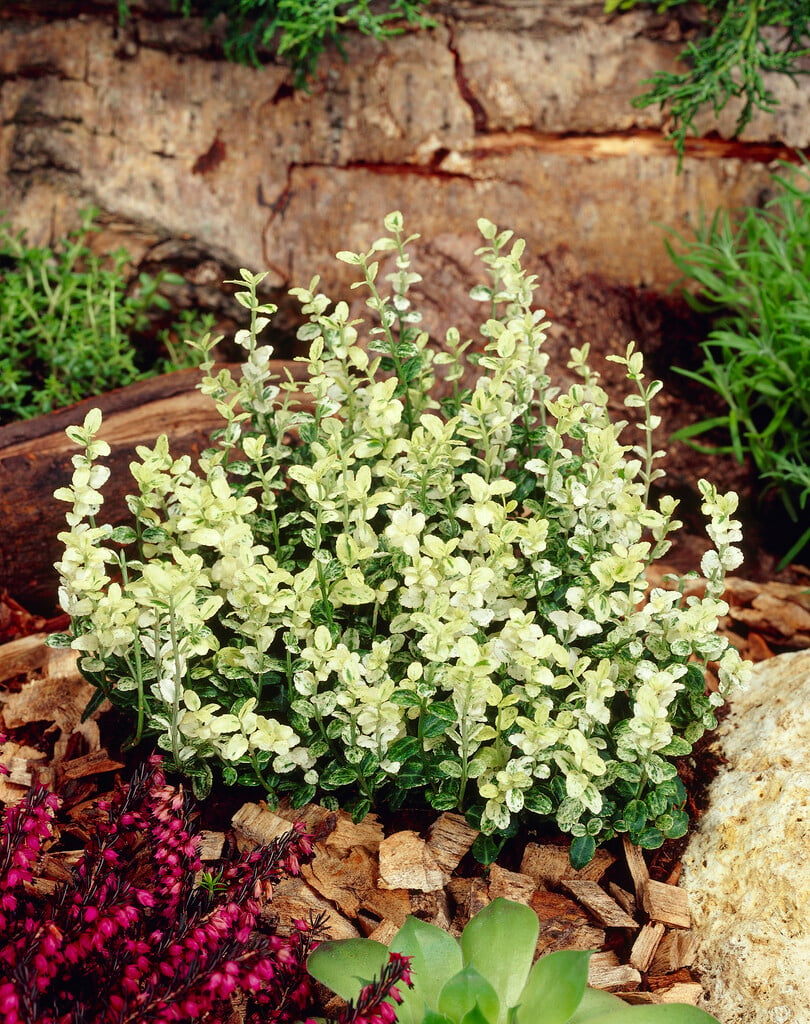Not the plant you're looking for? Search over 300,000 plants
Shrubs
Size
Ultimate height
Up to 10cmTime to ultimate height
2–5 yearsUltimate spread
0–0.1 metreGrowing conditions
Chalk
Clay
Loam
Sand
Moisture
Moist but well–drainedpH
Acid, Alkaline, NeutralColour & scent
| Stem | Flower | Foliage | Fruit | |
| Spring | Cream Green | |||
|---|---|---|---|---|
| Summer | Cream Green Variegated | |||
| Autumn | Variegated Cream Green | |||
| Winter | Cream Green |
Position
- Full sun
- Partial shade
Aspect
South–facing or West–facing
Exposure
Sheltered Hardiness
H6Botanical details
- Family
- Celastraceae
- Native to GB / Ireland
- No
- Foliage
- Evergreen
- Habit
- Trailing, Spreading branched
- Potentially harmful
- Humans/Pets: Harmful if eaten, wear gloves and other protective equipment when handling. For further information and contact numbers regarding pets, see the HTA guide to potentially harmful plants
- Genus
Euonymus can be deciduous or evergreen shrubs or small trees, often with fine autumn colour, and small flowers followed by colourful fruits
- Name status
Accepted
How to grow
Cultivation
Grow in any well drained soil in full sun or semi-shade. If grown in full sun they willl need more moist soil. Variegated cultivars need sun to enhance variegation.
Propagation
Propagate by semi ripe cuttings in summer
Suggested planting locations and garden types
- City and courtyard gardens
- Cottage and informal garden
- Patio and container plants
- Coastal
- Low Maintenance
- Banks and slopes
- Ground cover
Pruning
No pruning required. Trim if necessary. Pruning group 8
Pests
May be susceptible to vine weevil, horse chestnut scale, euonymus scale and caterpillars
Diseases
May be susceptible to powdery mildews, a leaf spot and sometimes honey fungus
Get involved
The RHS is the UK’s gardening charity, helping people and plants to grow - nurturing a healthier, happier world, one person and one plant at a time.
